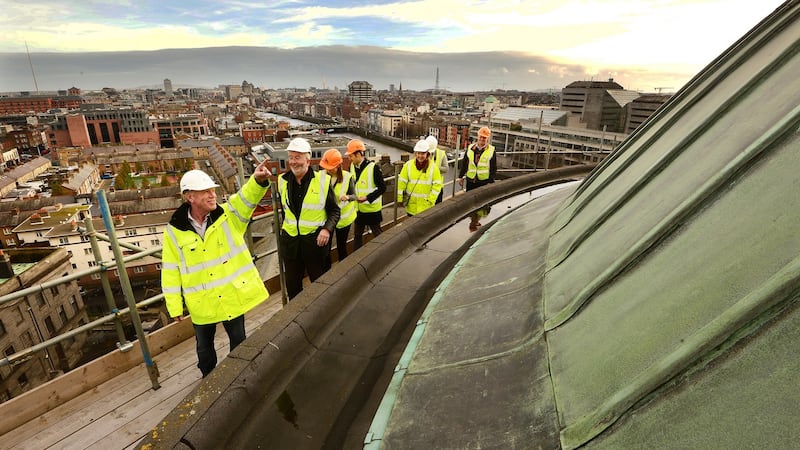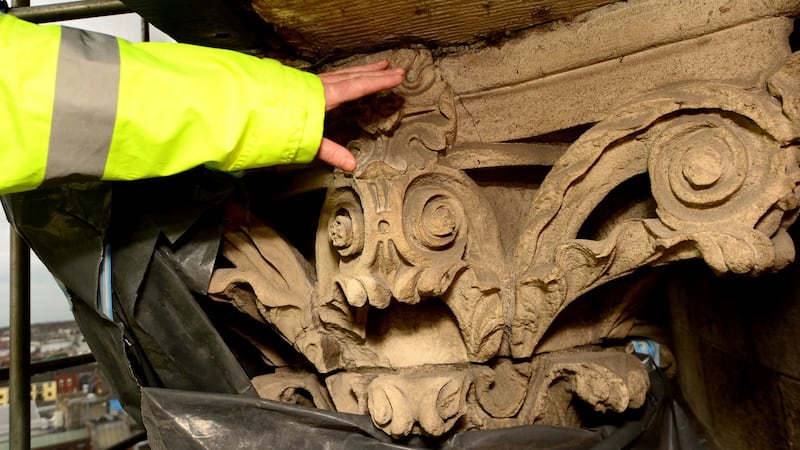The dome at the top of Dublin’s Four Courts could be opened to the public for the first time following a major restoration project by the Office of Public Works (OPW).
The most significant conservation and reconstruction project undertaken on the late 18th-century courthouse since it was rebuilt after the Civil War in 1922 began this year, four years since serious structural problems emerged with the dome.
In 2011, a large chunk of one of the ornate capitals that top each of the 24 Corinthian columns supporting the dome broke away and fell on to a roof below. Investigations showed a steel ring encircling the concrete dome had rusted and eaten into the capital. Further examinations last year indicated significant repairs were required to the concrete dome itself.


Civil War
Designed by Dublin’s most famous architect,
James Gandon
, and constructed between 1786 and 1802, the Four Courts was almost completely destroyed by fire in the Civil War when the original timber dome collapsed.
The dome was rebuilt in the late 1920s. "The reconstructed dome was made from concrete, constructed in a single pour over 36 hours and it's that concrete that's now giving us problems," said John Cahill of the OPW.
Laser scanning showed the steel inside the concrete dome was corroding and damaging the concrete. However, rather than try to remove the steel, which may have required substantial demolition and reconstruction of the dome, a system known as cathodic protection is being installed which involves inserting “sacrificial” zinc plugs into the concrete that then attract the corrosion away from the steel.
The concrete on the inside of the dome is also being resurfaced and will be repainted midnight blue with stars and this work should be completed by the end of this year.
“We’ve been dealing with the structural issues and now we are moving on to dealing with the finer issues of the capitals themselves,” Mr Cahill said.
Stone capitals
The stone capitals date from the original building and, though damaged in the Civil War, were saved and ingeniously reincorporated into the new dome.
“There are 24 columns [supporting the dome] and each of those is slightly different because they’ve been damaged by weathering and the fire. After the fire they kept the capitals and rotated them so that the exposed or damaged side was facing inward.”
The OPW will shortly be contracting stonemasons to undertake the detailed work required to conserve and restore the capitals. “We might do part as mortar repairs but some will require new stone, but we will try to minimise the amount of new carving,” Mr Cahill said.
About €1 million has been spent on the project so far, he said, but it was not possible to say how much the full restoration project would cost ahead of contracting the stonemasons and redeveloping the large space of the interior of the dome.
This space, similar in size to the main hall of the courts below it, has never before been open to the public but could now be converted to use as an exhibition space or even a restaurant or cafe. “I’ve suggested it might make a very interesting cafe, people could come up and get a view of Dublin. They could call it Above the Law and see how many people thought they were. It might actually be quite well-frequented.”








